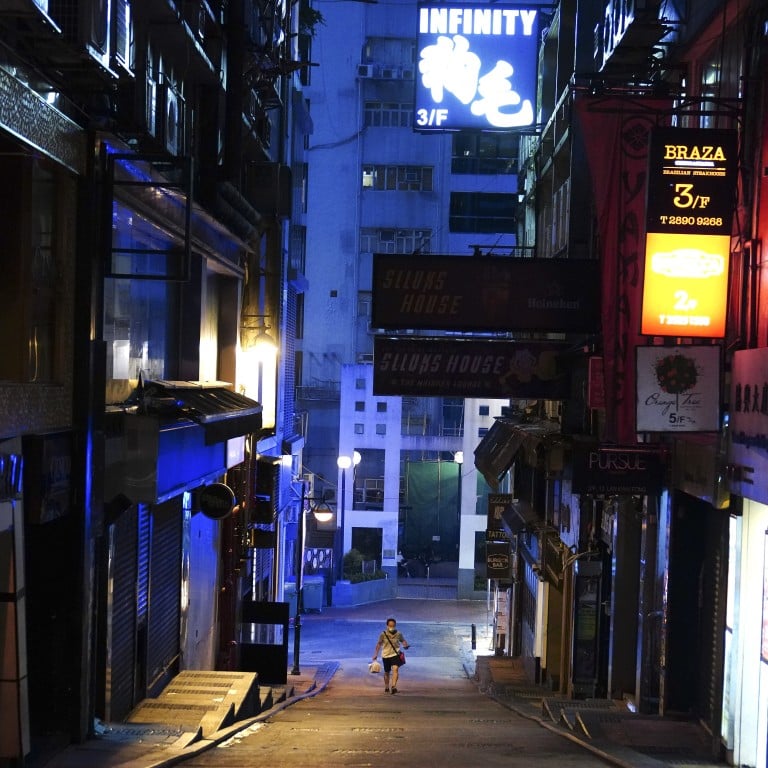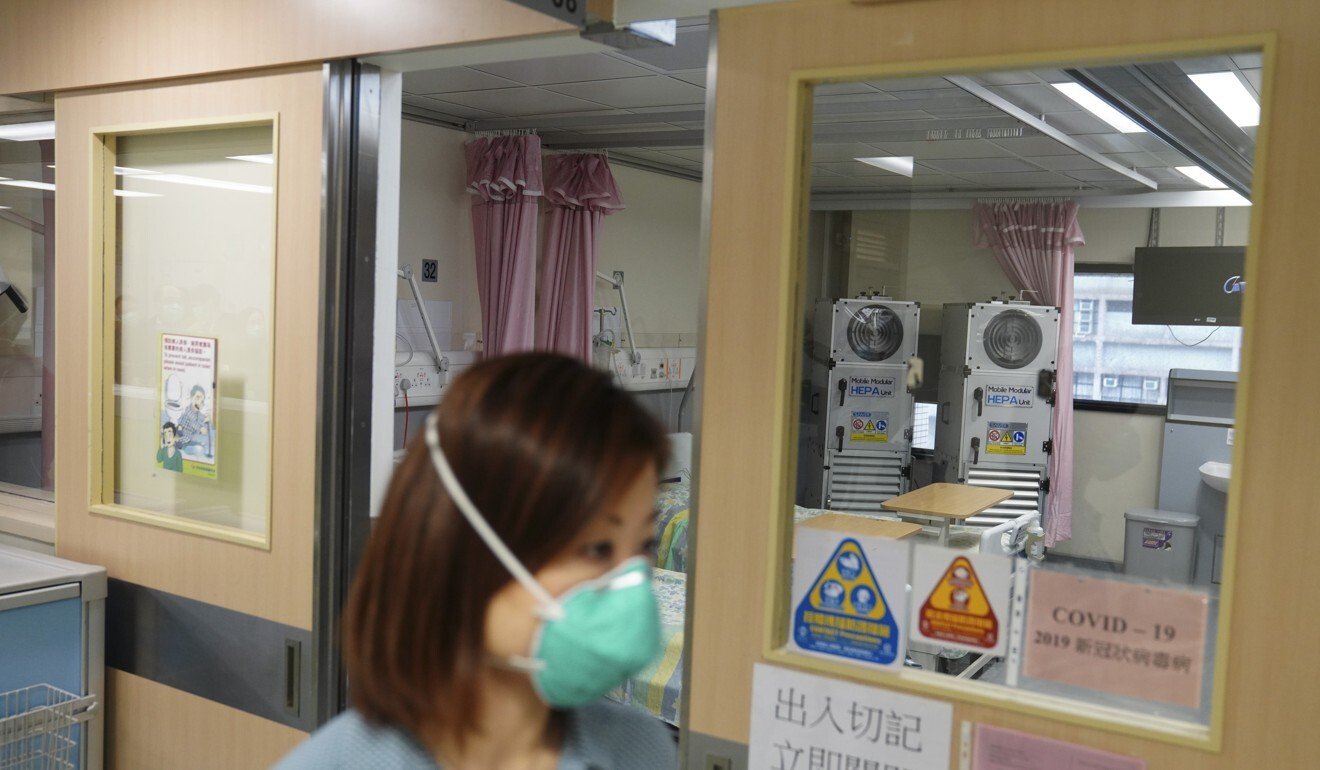
Hong Kong third wave: authorities weigh lockdown after 73 new Covid-19 cases reported
- Authorities turning to unprecedented measures, including requiring people to wear masks indoors at public venues, possibly starting this week
- As crisis pushes frontline workers to limit, officials admit laboratory mix-up wrongly labelled a woman positive and another negative
In a sign of the toll the escalating health crisis is taking on medical workers, authorities admitted overworked staff at a laboratory had wrongly entered data that resulted in a woman mistakenly testing positive for the virus and sent to an isolation ward in hospital, while another patient with Covid-19 tested negative, although she was already being treated in seclusion.
“If the trend of cases continues to go up, of course there will be further stringent measures, including a lockdown,” said Dr Chuang Shuk-kwan, head of the communicable disease branch at the Centre for Health Protection.
“We cannot judge the trend according to one or two days’ figures because there is an incubation period, and what we are seeing now reflects what happened in the past one or two weeks,” Chuang said. “The new measures have just been announced, so we will have to see how the situation develops. If the cases decrease, it means the measures are working and we will not need further regulations, but if they do not, we might have to add extra measures.”
The latest infections take the city’s total to 1,958, with 12 fatalities, while another 46 people have tested preliminary positive.
In the laboratory mix-up, a 47-year-old woman who tested negative on Saturday was instead listed as positive and sent to a quarantine ward at Pamela Youde Nethersole Eastern Hospital on Monday, where she spent seven hours with another infected patient in an isolation ward before the mistake was discovered on Monday. She was removed from the ward but is now listed as a close contact and will have to remain quarantined in hospital.
“However, as the air changes in the ward are quite frequent, we believe her risk of infection is relatively low,” said the centre’s Controller Dr Wong Ka-hing.
The blunder also caused a 34-year-old woman whose test returned a positive result on Saturday to be labelled as negative, Wong said. She was originally sent to North Lantau Hospital as she had symptoms and was moved to Princess Margaret Hospital on Monday.
Everyone was too busy and too tired
The testing procedure required some data to be input manually and the mistake happened on a day when there were a large number of cases, according to Dr Dominic Tsang, a microbiology consultant with the centre’s Public Health Laboratory Services Branch. “Everyone was too busy and too tired,” Tsang said, extending apologies to the two patients.
Several departments will be tasked with ensuring compliance, including police, the Food and Environmental Hygiene Department and the Housing Department. Violators are subject to a fine of HK$5,000 (US$645).
The MTR Corporation, which operates the city’s rail lines, is also reducing service frequency during non-peak hours on various lines from Wednesday as passenger numbers had decreased due to the recent rise in infections.
One of the newly confirmed infected was a 54-year-old man who spent six days in a general ward at Pamela Youde. Ten patients were deemed as close contacts, five of whom had left the facility and authorities were trying to track them down.
Dr Linda Yu Wai Ling, a chief manager at the Hospital Authority, said the patient had observed “good compliance” with preventive measures and worn a mask during his stay. “We hope this will reduce the chance of an outbreak in the ward, but we will need to see the patients’ test results,” Yu said.
Also infected was a doctor who runs the Kind Medical Centre in Causeway Bay and treated a person earlier confirmed to have the virus. Physician Chan Kai-ming, aged 44, had also attended to residents at the Care and Services Elderly Home in North Point. Health authorities said they would carry out further tracing for the case.
Pro-Beijing politicians call for postponement of elections amid coronavirus crisis
Three new cases were related to a cluster tied to a large family gathering at Kwai Fong Chiuchow Garden eatery, taking that outbreak’s total number to nine. Fresh infections were also tied to Fulum Restaurant in Tuen Mun Central Square, while the number of people who have contracted the virus after eating at Victoria Harbour Restaurant in Prince Edward has risen to six.
“[Some] customers who visited the Victoria Harbour Restaurant on different dates last week became infected, leading to the worries over environmental contamination in the restaurant,” Chuang said.

Hong Kong began the month riding a three-week-long streak of zero infections, but the situation began to rapidly deteriorate 10 days ago as clusters began to emerge in several neighbourhoods.
Health experts warn the high daily count is expected to continue in the coming days. Dr Ho Pak-leung noted the city’s cumulative infections now outstripped neighbouring Guangdong province, which had 1,659 confirmed cases yet a population 10 times larger.
University of Hong Kong microbiologist Professor Yuen Kwok-yung agreed the government should impose a lockdown if cases rose exponentially after seven to 14 days, a position backed by another leading expert, David Hui Shu-cheong, a professor of respiratory medicine at Chinese University, who said the measure was needed if the situation “continues to deteriorate”.
Ho dismissed concerns that the blanket rule on wearing masks would be unworkable, citing Singapore, which exempted children under the age of two, people who were exercising and those who could not wear the covering for health reasons.
Both Ho and Hui expressed concern that the worsening health crisis would soon overwhelm the city’s public health system. Hui said public hospitals had a capacity of 1,700 isolation beds, which were 68 per cent filled, and if new cases continued to soar by three digits a day, space would be gone within a week
Compounding the problem was that current Covid-19 sufferers were generally older. The median age of inpatients during the city’s first and second wave of infections was 34, and they spent an average of 19 to 21 days in hospital, Hui said. But with an increase in elderly patients during the third wave, many of whom were in more severe condition, he worried public institutions would struggle to cope.
Ho pointed out only 196 units were available in the city’s quarantine centres on Sunday, and those could easily be taken up in the coming days.


